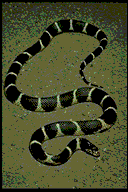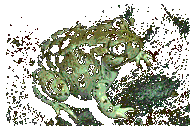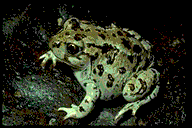.
|
Strength In This Field
Collection:

|
More Info:

|
Where:
 . .
|
|
|
|
|
|
|
|
.
|

Macleay
Museum
Sydney
Australia
|
 The Macleay Collections house
some 1370 reptile specimens
and some 1000 amphibian
specimens.
The Macleay Collections house
some 1370 reptile specimens
and some 1000 amphibian
specimens.
|

|
.
|
|
.
|

Museums
of Natural
History
Copenhagen
(Faculty of Science, University of Copenhagen)
Denmark
|
 The Herpetology
Section possesses
reptiles and amphibians from Denmark and the rest of Europe.
From the earlier settlements on the Coast of Guinea, the
Museum possesses a small, but very fine collection of
snakes, among others the spitting cobra, Naja
nigricollis, anuran amphibians, East African tree frogs,
and other representative collections of reptiles and
amphibians.
The Herpetology
Section possesses
reptiles and amphibians from Denmark and the rest of Europe.
From the earlier settlements on the Coast of Guinea, the
Museum possesses a small, but very fine collection of
snakes, among others the spitting cobra, Naja
nigricollis, anuran amphibians, East African tree frogs,
and other representative collections of reptiles and
amphibians.
|

|
.
|
|
.
|

Natur
Historiska Riksmuseet
(Swedish Museum of Natural
History)
Stockholm
Sweden
|
 The Herpetological
collections date
from the early 1740s, and are rich in historical items,
including Linnaean types. The Collections include
representatives of most of the currently recognised
families. It is estimated that the Herpetology collections
have a total of about 50,000 specimens in about 10,000 lots.
A small portion of this herpetological material (some 2,000)
lots has been computer catalogued and can be accessed
through their Herpetology
Collection Search
Database.
The Herpetological
collections date
from the early 1740s, and are rich in historical items,
including Linnaean types. The Collections include
representatives of most of the currently recognised
families. It is estimated that the Herpetology collections
have a total of about 50,000 specimens in about 10,000 lots.
A small portion of this herpetological material (some 2,000)
lots has been computer catalogued and can be accessed
through their Herpetology
Collection Search
Database.
|

|
.
|
|
.
|

Natural
History Museum
Berne
Switzerland
|
 The Swiss
Amphibian and Reptile Conservation Programme
(KARCH) represents
the official task force in Switzerland to promote, implement
and coordinate efforts to conserve the Swiss amphibian and
reptile fauna, which is protected by law in Switzerland
since 1967.
The Swiss
Amphibian and Reptile Conservation Programme
(KARCH) represents
the official task force in Switzerland to promote, implement
and coordinate efforts to conserve the Swiss amphibian and
reptile fauna, which is protected by law in Switzerland
since 1967.
|

|
.
|
|
.
|

The
Academy of Natural Sciences
Philadelphia, PA,
USA
|
 The Herpetology
Department has some
40,000 reptile and amphibian specimens. The collection is
unique for its richness in early "New World" species
including many specimens from Panama and Costa
Rica.
The Herpetology
Department has some
40,000 reptile and amphibian specimens. The collection is
unique for its richness in early "New World" species
including many specimens from Panama and Costa
Rica.
|

|
.
|
|
|
|
|
|
|
|
|
|
|
|
|


